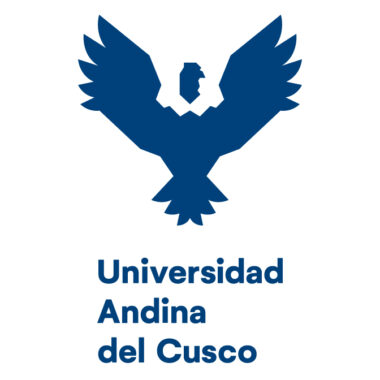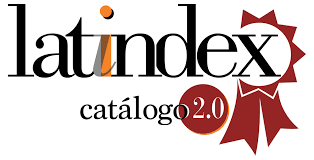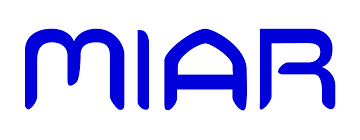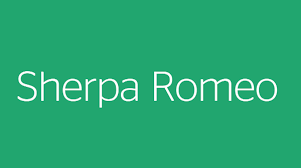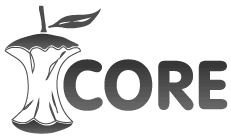Submissions
Submission Preparation Checklist
As part of the submission process, authors are required to check off their submission's compliance with all of the following items, and submissions may be returned to authors that do not adhere to these guidelines.- The submission has not been previously published, nor is it before another journal for consideration (or an explanation has been provided in Comments to the Editor).
- The submission file is in OpenOffice, Microsoft Word, or RTF document file format.
- Where available, URLs for the references have been provided.
- The text has simple leading; 12 points font size; Times New Roman font; italics are used instead of underscore (except in URLs); and all illustrations, figures, and tables are placed in the appropriate places of text, and sent separately in the section of others; does not contain footnotes.
- The text adheres to the stylistic and bibliographic requirements outlined in the Author Guidelines.
Scientific Articles
It must describe the results of an investigation, with an updated theoretical foundation and methodology supported by empirical evidence, under any investigative approach.
Must contain:
• The title in Spanish and English, concise and informative, is recommended up to a maximum of 20 words.
• The author(s) with names and surnames according to the ORCID denomination, record academic degree or title and institutional affiliation (up to 3 levels). In the case of several authors, the order according to the contribution made. Everyone must put their email.
• The summary must summarize the entire work. It must contain: the objective of the investigation; accurate and necessary information on the applied method; results; conclusions, and implications or applications.
The length must be between 150 and 250 words, in a single paragraph, without indentation and in the past tense. Include in the lower part of the summary, the keywords in a minimum of 3 and a maximum of 10 those that identify the topic of the publication). Also include the abstract (abstract with a correct translation into English) and the keywords (key words correctly translated into English).
• Declaration of conflict of interest (link)
Introduction. It provides enough information for the reader to understand and evaluate the results of the work. It includes the research problem, objectives, hypothesis, rationale, background, author contributions, and difficulties or limitations.
Material and methods (if relevant). It includes the scope and design of the research, population and sample data, data collection techniques and instruments (equipment and supplies used) and information processing.
Results Presents, clearly and simply, the results obtained. It is recommended to avoid describing the data shown by tables or figures that should be a maximum of six.
Discussion. The results are exposed and show, if they agree or not, with results and interpretations of works of other authors or of the theories.
Conclusions
Thanks (optional). Only those who contributed very important support are mentioned.
Bibliographic references. A minimum of 25 is requested, those that have been cited in the text are mentioned, for this the APA style must be used.
Notes:
- The total length should not exceed 3500 words.
- Maximum six illustrations.
- The drawings, graphs and photographs that, in correlative order, go below the figure, will be cited as figures, and as tables the tables that contain figures and percentages that, in correlative order, go above the table.
- Scientific names, Latin locutions and words or phrases in a foreign language will be in italics.
- The writing style of the texts should always be impersonal, unless express mention is made of the author's opinion.
- Always try to write concisely, clearly and precisely. This includes paying attention to frequently repeated words (especially in the same paragraph), colloquial expressions, “free” translations of terms from other languages (eg, environmentalization, conceptualization, organizational, educational, instructional… .), etc.
- It is important to use non-sexist language, which means using, as far as possible, general terms. However, they must not be introduced indiscriminately. Likewise, it is necessary to avoid loading the text with expressions such as students, children, etc., which make reading difficult. Inclusive language is fine, however, we must stick to what the RAE recommends.
Short Communication
It informs or communicates something particular, the result of a project or part of it. In addition to informing the most relevant aspects of the chosen topic, it should also serve to stimulate the concerns of readers, raise questions and point out the most current lines of research on the subject.
- The title in Spanish and English, concise but informative, a maximum of 20 words is recommended.
- Author(s), names, paternal and maternal surnames. Below, the highest academic degree or title, and the position held in the labor institution. In the case of several authors, the order according to the contribution made. Everyone must put their email.
- Summary and abstract, with keywords and keywords.
- Declaration of conflict of interest
- Introduction
- Body of the document
- Discussion
- Bibliographic references. From 15 references in APA format.
- Author's email.
- The number of words should not exceed 2500.
Review Articles
- The title of the article in Spanish and English, concise but informative, a maximum of 20 words is recommended.
- Author(s), names, paternal and maternal surnames. Below, the highest academic degree or title, and the position held in the labor institution. In the case of several authors, the order according to the contribution made. Everyone must put their email.
- Declaration of conflict of interest
- Introduction where the method of search and selection of documents is indicated.
- Body of the document
- Conclusions
- Bibliographic references. More than 25, those that have been cited in the text are mentioned, for this the APA style must be used.
- The total length should not exceed 5000 words.
Letter to the Editor
It is a written way of expressing yourself and is usually written in response to a specific article that has appeared in a newspaper or magazine. These letters can be used to highlight some aspects for or against one of a topic, correct any misunderstandings or errors that the article contains and reinforce the key messages or simply inform.
- Title in Spanish and English
- Author and institutional affiliation. Author's email.
- Begin by mentioning the objective reason for the letter, if necessary, just a table or a figure.
- Reason for raising the opinion
- Discussion of results or recommendations.
- Bibliographical references in APA format, no more than 6.
- The total length should not exceed 500 words.
Case Report
They are reports obtained by working with an individual, a group, a community or an organization. Case studies illustrate a problem and/or shed light on required research, clinical applications, or theoretical questions. Authors must determine the balance between providing important illustrative material and using confidential material responsibly.
- The title in Spanish and English, concise but informative, a maximum of 20 words is recommended.
- Author and institutional affiliation. Author's email.
- Summary and abstract, with keywords and, key words.
- Introduction
- Presentation of the case
- Discussion and Conclusions
- Bibliographic references. From 15 references in APA format.
- The total length should not exceed 2500 words.
Cultural note
Contains aspects that have to do with historical and/or cultural contributions at a local, national and international level. It does not have a structure and is free to present by the author. The word limit is 3000 and has a maximum of 6 figures that must be accompanied by an explanatory legend. It must have up to 15 bibliographical references.
Photografic gallery
It contains photographs of interest due to their singularity or cultural novelty, accompanied by a brief commentary on the subject and an explanation of the origin of the photos presented. The word limit is 1000 and has a maximum of ten figures, it does not have an abstract. The figures must be accompanied by an explanatory legend.
Copyright Notice
The content of the publications is the responsibility and property of the authors. The journal allows authors to maintain copyright on published articles and documents.
Privacy Statement
The names and email addresses entered in this journal site will be used exclusively for the stated purposes of this journal and will not be made available for any other purpose or to any other party.

